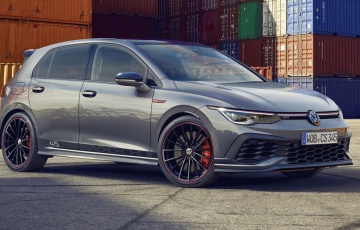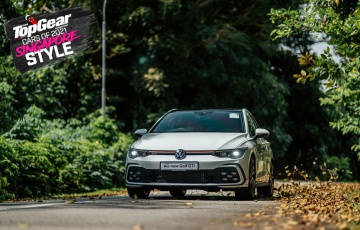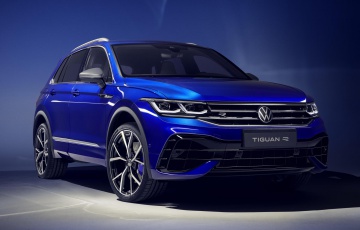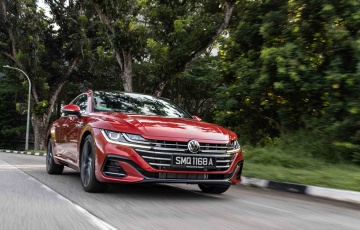Want a hot hatch alternative? Here are 22 non-obvious ones
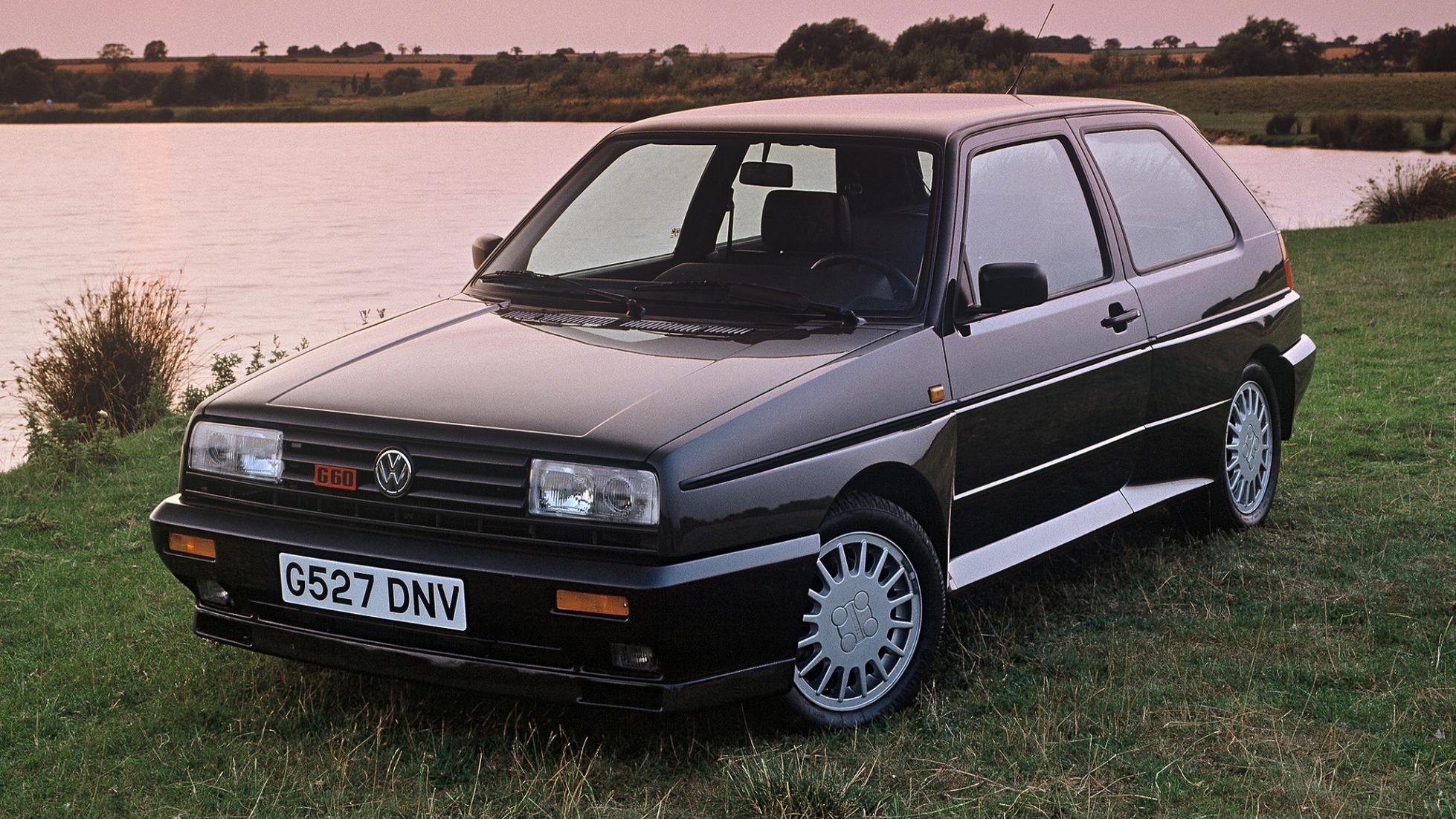
Volkswagen Golf Rallye
On the face of it, the Golf Rallye sounds perfect: take MkII GTI, add viscous-coupling 4WD system, supercharge the engine and send it off to face the granddaddy of 4WD hot hatches, the Lancia Delta Integrale.
And when we say face, we don’t mean in the boring sales-race sense; we mean in the 1990 World Rally Championship. And, as you probably don’t remember the Golf Rallye, you can pretty easily imagine how well it did.
And it wasn’t much better in the road-going homologation versions; the supercharger’s extra punch didn’t offset the extra weight of the four-wheel-drive system, so it was slower in the 0-100 sprint than a regular Golf GTI. Which cost half as much. Ouch.
Luckily, there was a faster version that could blow the doors off the MkII GTI (and much else besides) with a 6.4-second 0-100 time: the Golf G60 Limited. Unluckily, that ‘Limited’ part was accurate – only 70 or so were made, and most of them went to the muckety mucks at Volkswagen.
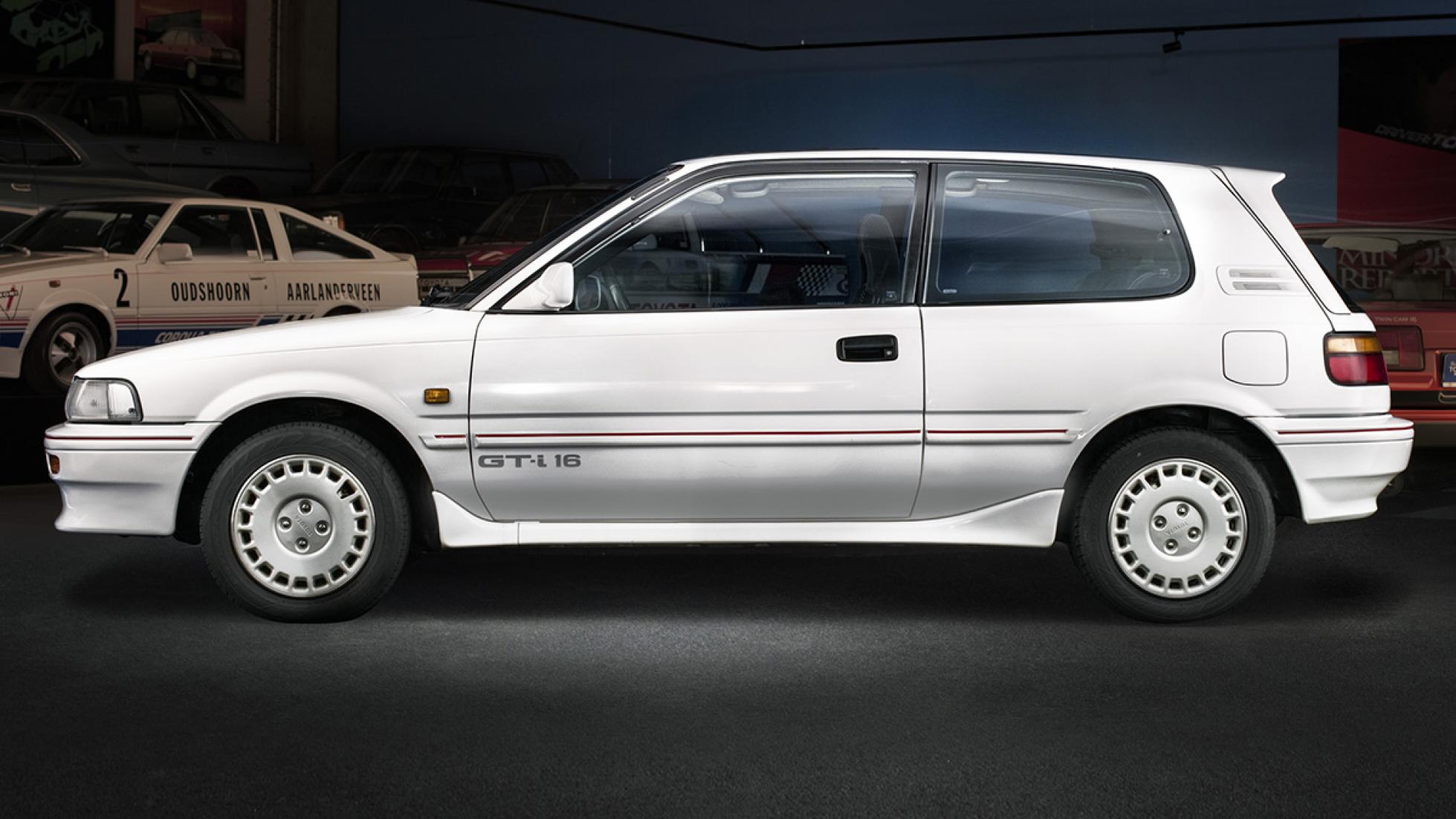
Toyota Corolla GTI-16
Alphanumeric sequences don’t tend to be famous. There are, however, a few exceptions: C-3PO. AK-47. AE86.
The AE86 has inspired professional drivers, manga and even Toyota itself, when it created the GT86 as a spiritual successor. But as gloriously slidey as the Hachiroku might be, it’s also about as obvious as a ‘You up?” text at 1am. Instead, let’s focus on the unloved and overlooked GTI-16.
It had some of the right model codes – the 4A-GE inline four, for instance, just like the AE86. But it just used them the wrong way, according to… ooh, just about everyone.
Yes, it was front-wheel-drive, as opposed to the 86’s rear-driven goodness, and was therefore heretical and apostatical and antithetical to the breed and blah blah whinge moan couldn’t hold a powerslide with both hands and six hours’ practice.
Unfortunately for the GTI-16, its shared 4A-GE meant that, just like the Visa, its engine was frequently robbed for AE86 projects and converting the comparatively wimpy American export model to proper JDM goodness.

Mazda 323 GT-R
Hey, look – another homologation special! But the 323 GT-R really came about in a confluence of circumstances that’d be hard to repeat today.
Number one: the huge boom in Japan in the 1980s that resulted in the superlative cars of the late Eighties and early Nineties. Japan’s car buyers wanted high-performance, locally built metal and Japan’s car industry was only too happy to accede.
Number two: rally was really, really popular back in the Eighties and early Nineties. It’s still cool now, don’t get us wrong or anything, but that was definitely its heyday. After Group B was canned, Group A was in full swing, with manufacturers chasing every performance advantage, however legal it might be (see: Celica GT4 and one of the cleverest pieces of cheating ever devised). Of course, it made next to no difference for six years on the trot, as Lancia scooped up every WRC manufacturer trophy from 1987 to 1992.
Little wonder, then, that Mazda didn’t fancy its chances and pulled out of WRC after the 1991 season, leaving the GT-R all dressed up with nowhere to race. Still, 210hp, all-wheel-drive and the exterior dimensions of a cockroach make the 323 GT-R a left-field homologation special. Or, in other words, absolutely excellent.
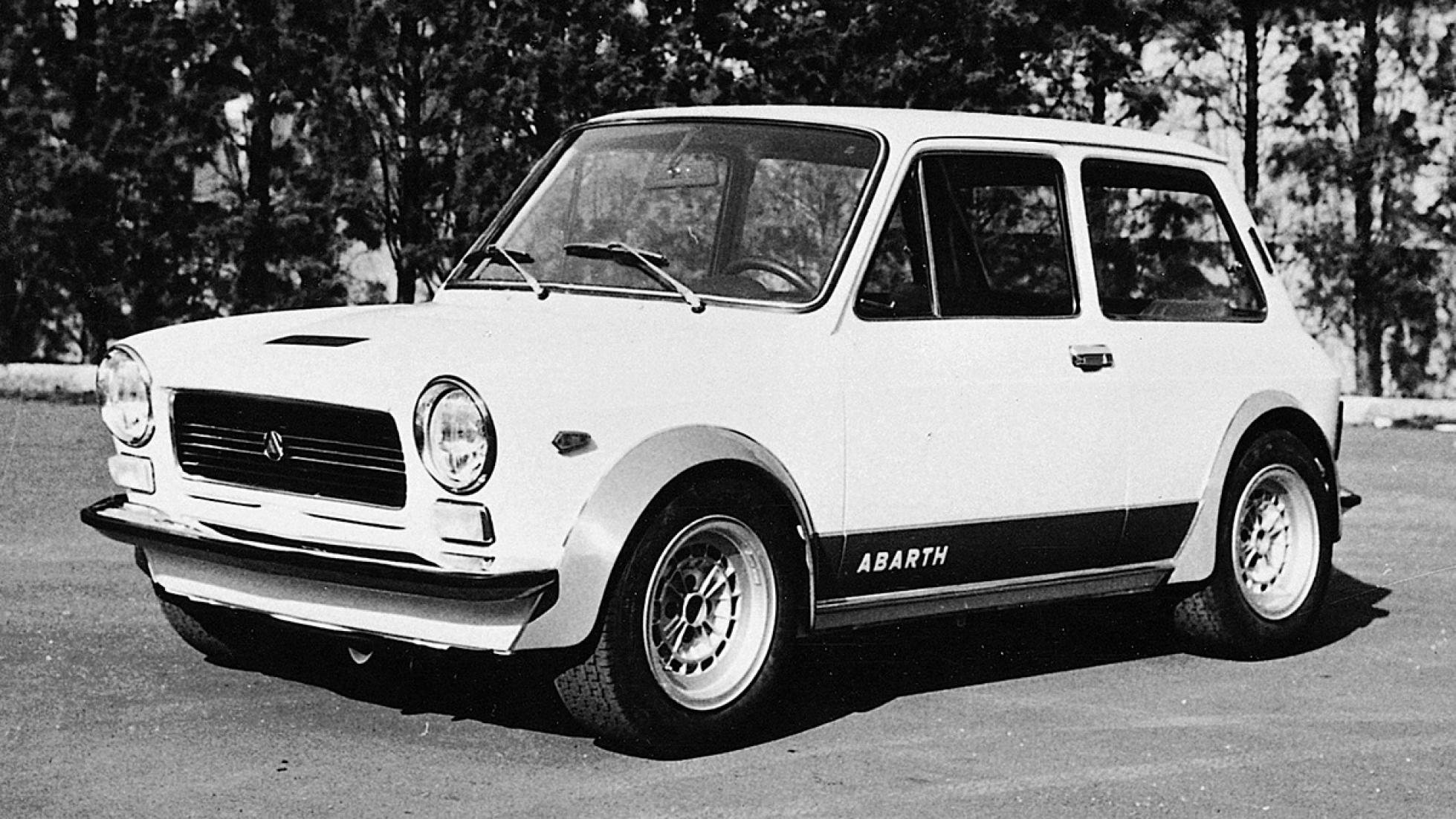
Autobianchi 112 Abarth
Autobianchi, in case you’ve not come across one before, was an Italian joint venture between Fiat, Pirelli and Bianchi motorbikes that tested a pretty novel concept back in the day: high-tech, exceptionally small cars.
As you’ll likely be aware, big tech generally arrives in big cars, and then trickles down to the smaller ones once the economies of scale make parts less prohibitively expensive.
Because the margins on small cars are comparatively tiny, adding pricey tech means that the finished product is more expensive than larger cars, which people tend to gravitate to – more car for the money and all that.
Autobianchi did a pretty damn good job, considering, and pioneered much that Fiat eventually used on its mass-market cars.
It was bought out by Fiat in the Sixties, folded into Lancia (another recent purchase at the time) and killed off in the Nineties. Lancia, on the other hand, is purportedly still alive. Yeah, right.
Right, boring contextual stuff out of the way. Now, let’s talk about when things were good at Autobianchi. And they didn’t get much better than with the 112 Abarth, Italy’s answer to the Mini Cooper.
With just 700kg to shift, the Abarth’s twin-barrel-carb, 70hp engine was more than enough to earn a hot hatch designation, especially by the standards of the 1970s.
And it was so good to drive that it spawned not one, but two one-make rally championships.
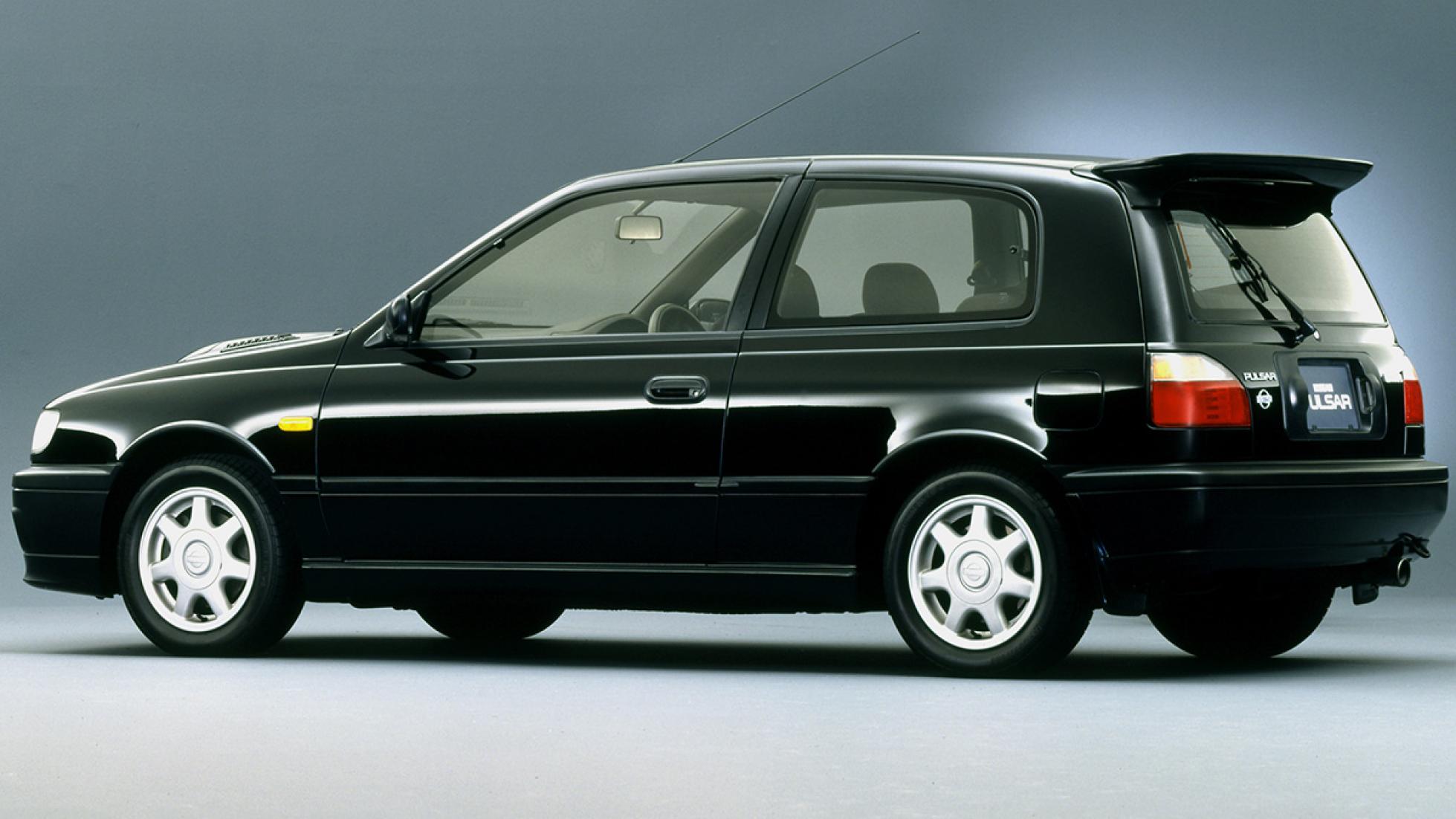
Nissan Pulsar (Sunny) GTI-R
The Nissan Pulsar is probably not the first car you turn to when you think of performance. Or style. Or panache. Or things staying resolutely together as the manufacturer intended.
Clearly, this was a situation that required remedy. Luckily, Nissan also did a wonderful line in turbocharging, all-wheel-drive and generally being complete and utter nutters. You see where this is going.
And go it did; the GTI-R used the excellent SR20 in a huge-performance spec (the SR20DET, if you’re an engine code fan – and who isn’t, really?), pumping out 230hp and 285Nm. Not bad for a 2.0-litre four from the early Nineties. And especially not bad when it was shifting a tiny, 1,200kg hatchback. That’s including the ATTESA four-wheel-drive system, too. We suggest not crashing, based on some quick sums.
With four-wheel drive, 230hp and six and a half feathers’ worth of weight to shift, it’s perhaps not entirely surprising that 0–100 was done and dusted (feather… dusted? We’ll see ourselves out) in just 5.4 seconds.
And what was all this in aid of? Well, it was Nissan’s tilt at rallying, where it faced off against… the Lancia Delta Integrale. Ah. You can imagine how well it fared.
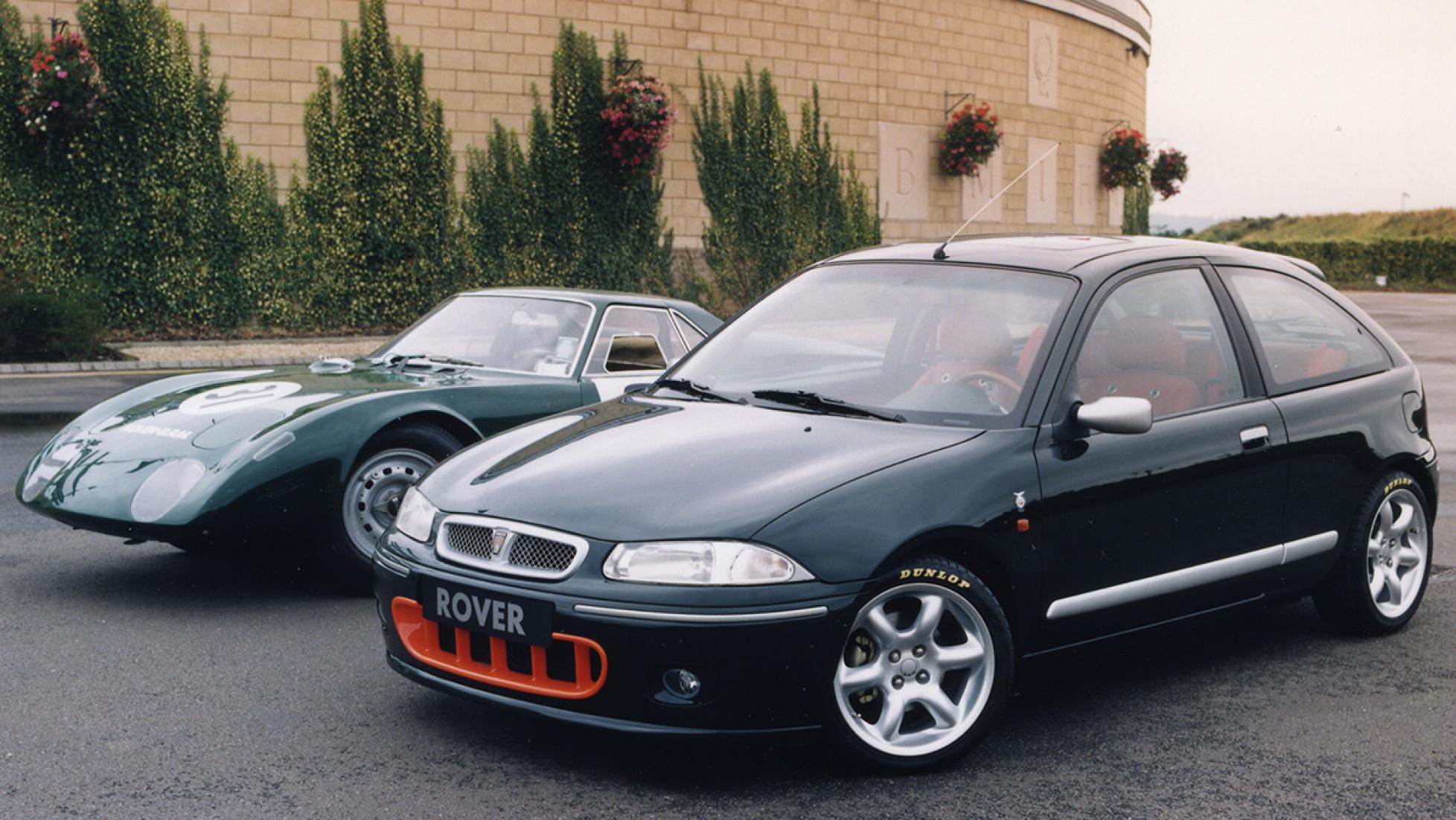
Rover 200 BRM
Yeah, yeah, OK, it’s a Rover. And the livery probably isn’t to everyone’s taste. But that orange-green scheme has history, damnit, with Jackie Stewart and Le Mans and gas-turbine-powered cars and all sorts of stuff that men with elbow patches on their pyjamas could tell you about. So it might be a stretch, but at least it references something real – and pretty damn cool besides.
OK, a Rover hatch has as much to do with the glory days of BRM as a housefly has to do with an SR-71, but it did make it interesting enough for us to talk about on a car website. So… victory?
And Rover actually did a pretty good job at hotting up the deeply uncool 200 – a five-speed, close-ratio gearbox pepped up the 145hp K-series, while variable valve timing meant it was a decently torquey little thing as well, even if revving the valves off it was the better way to travel.
A torque-sensing limited slip diff sorted out cornering traction, while properly sharp suspension brought the grip. It’s all first-principles go-faster stuff, and as such, we heartily approve. The bordello-red cross-stitched leather interior, on the other hand…
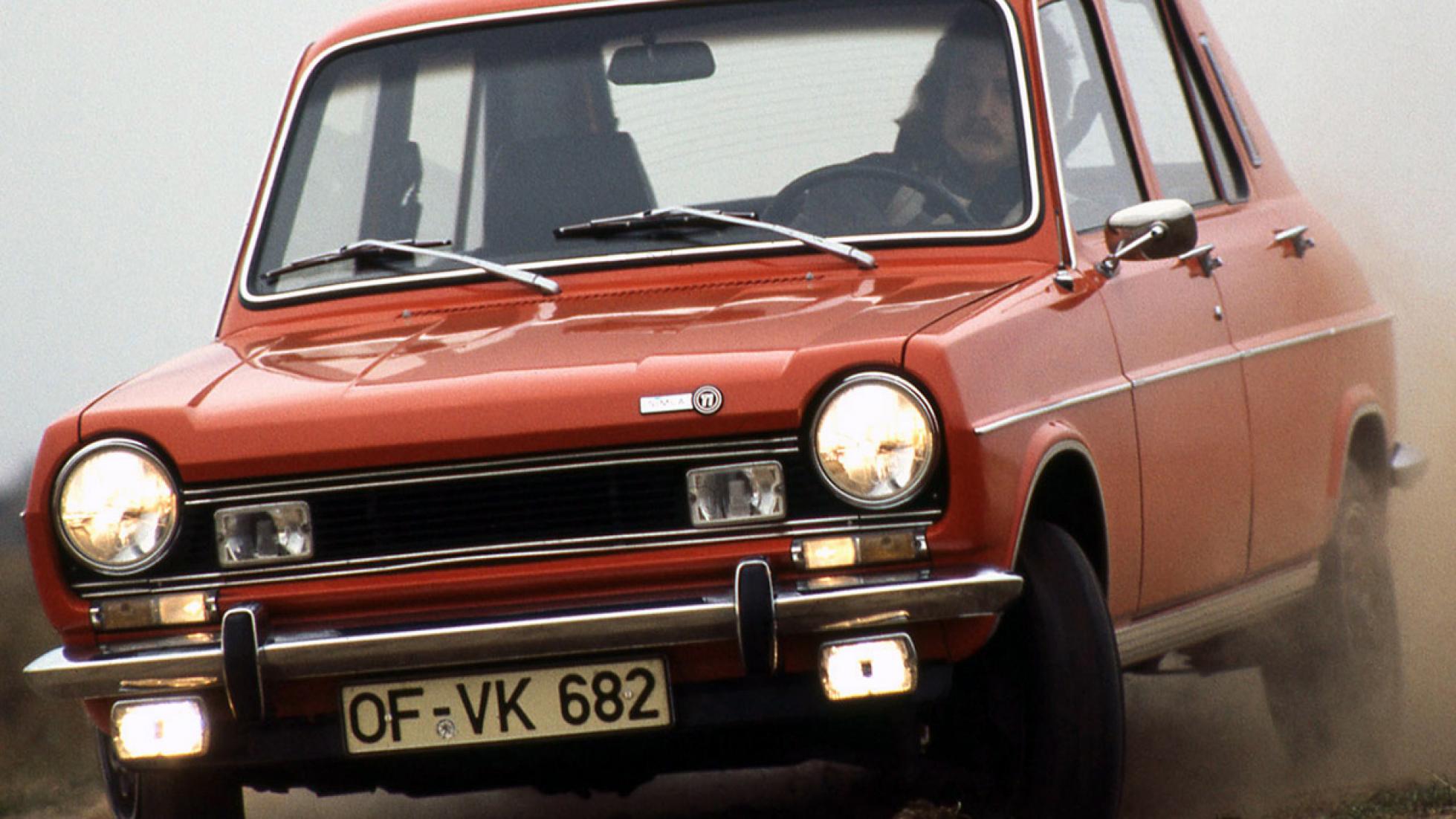
Simca 1100Ti
Ever wondered which car was the first true hot hatch? If you thought “Golf GTI”, you’re pretty close, but these cigars will stay right where they are.
In fact, the GTI, as transformative (and transcendent) as it may be, was pipped at the post by those pesky Frenchies and their inability to let other people have good ideas before them. Yes, hot hatch historians (now there’s a niche) have crowned a little French hatchback from a long-defunct brand as the progenitor, the grand-daddy of hot hatchery.
What made it so? Firstly, it came out about two years before the Golf GTI, which is an excellent start to the whole ‘progenitor’ thing. Secondly, it had about 40 per cent more power than the standard Simca 1100 (a blistering 80hp), could do more than 160km/h (in the 1970s, don’t forget) and had the prerequisite hot hatch accoutrements – disc brakes, alloy wheels and stiffer suspension that are now writ large in the hot hatch playbook.
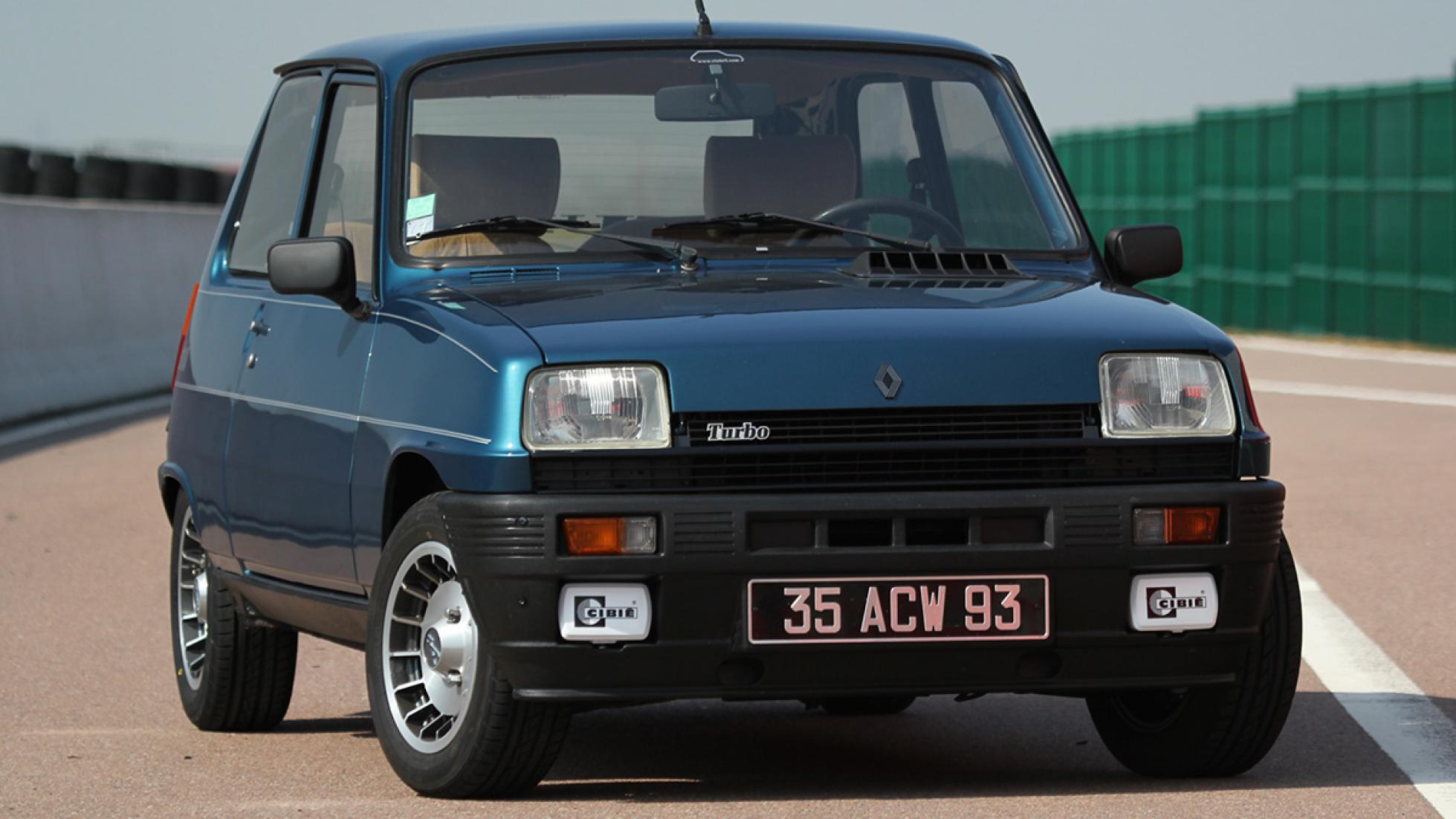
Renault 5 Alpine
Good grief, there’s another hot hatch that beat the Golf GTI to it. And wouldn’t you know it? A French one, too. Cry out with zut alors and Gott im Himmel as you see fit.
OK, it was the GTI that first properly piqued the public consciousness to all that a performance version of an around-town runabout could be. And the Simca did that ‘FIRST!’ thing that was popular with internet comments back in the day, for whatever reason.
But the R5 Alpine (or Gordini, depending on your place in the world) certainly had the ingredients to heat up the regular Renault. For a kick-off, it was built by Alpine (go figure) in its Dieppe plant, and benefitted from some very old-school go-faster tech like crossflow heads (some say even talking about crossflow heads for too long can cause irreversible sideburns) and hemispherical combustion chambers.
Yep, we’re talking about crossflowed hemi heads on a Renault. And, thanks to this properly mechanical tuning, 1.4 litres of displacement translated to about 90hp (or 110hp in the later turbo versions) and a top speed in excess of 175km/h, if you were very, very brave.
Of course, the lunacy just ratcheted up from there, resulting in the Renault 5 Turbo, a mid-engined thing of wonder and snap oversteer.

MG Maestro Turbo
You know you’re getting into the performance side of BL when the Austin badge cedes to the MG octagon. Or maybe you don’t. Maybe we’re speaking in hieroglyphs, and you wouldn’t know your Austin Princess from your MGB GT.
Maybe British Leyland made things so impenetrable with its range of brands that your average non-British person wouldn’t have the foggiest what MG, Morris, Austin, Rover and Leyland even mean.
Happily, most of us don’t give British Leyland a first thought these days, let alone a second. And this tends to be because its cars were generally hideous and flimsy.
The MG Maestro is… probably both of those things, if we’re honest. But they also had a 2.0-litre turbocharged engine that could offer 150hp, if you asked it nicely. That meant the Maestro Turbo, while looking like a racing version of a Corby press, could actually shift itself and its driver from rest to 95km/h in 6.7 seconds*.
For a bit of context, the Alfa Romeo 147 GTA, which came 14 years later and had a 250hp Busso V6, did the same journey in about six seconds flat. So, not shabby. Unlike roughly everything else about it.
*There’s more than a little conjecture that the Maestros used to test 0-95 times were hotted up from the factory to record times like these. Hotted up where? Around a brazier?
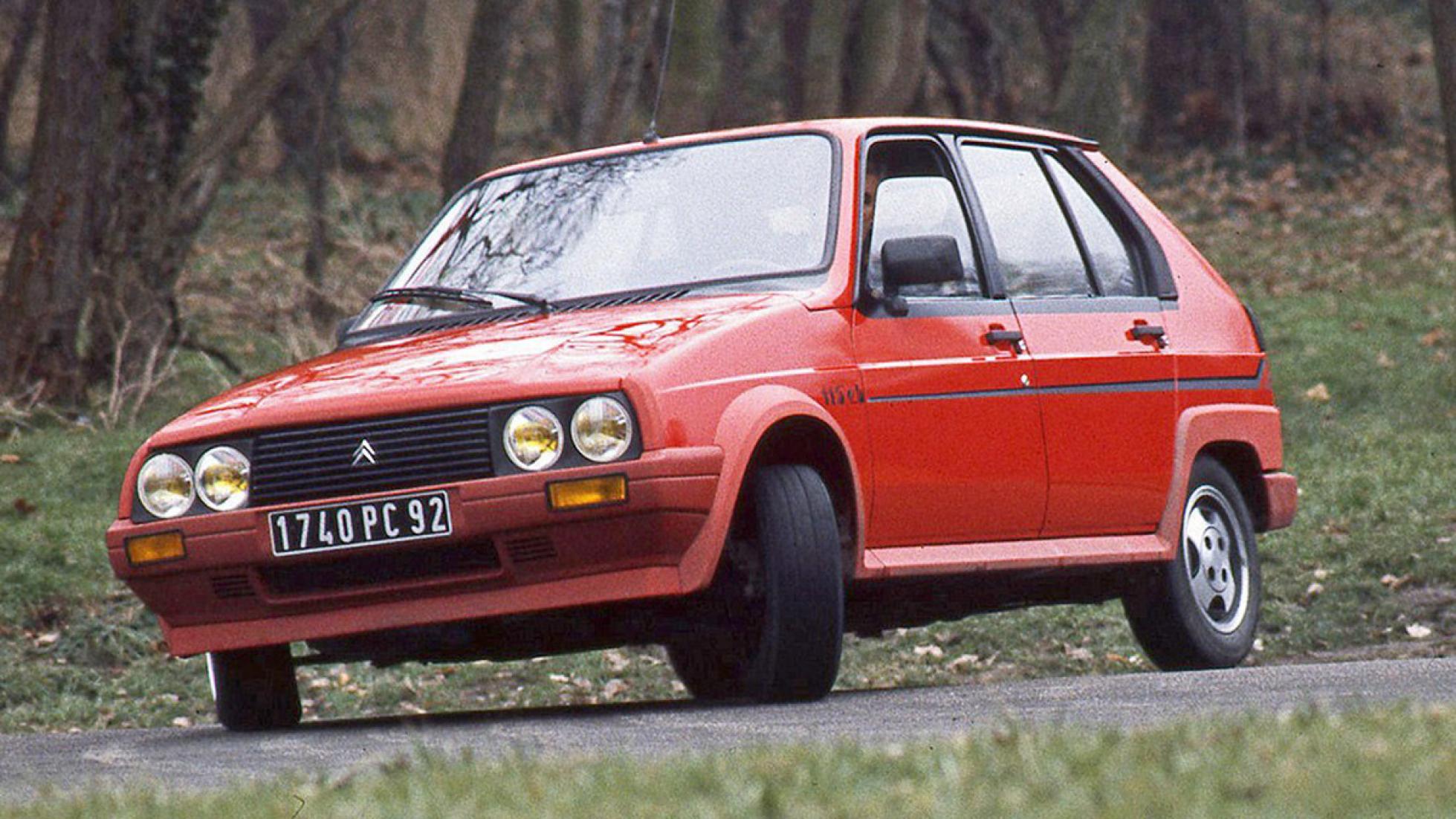
Citroen Visa GTI
Apart from sharing its name with a credit card (other credit cards are available, and they’re all equally terrible ideas), the Visa GTI’s main claim to fame is that it uses the engine from the 205 GTI. Now, imagine the fate that has befallen quite a few Visa GTIs in the time since their inception. Yup.
But back in the day, this was pretty much the poor man’s 205 GTI. But, considering the Peugeot 205 wasn’t exactly pricey, was praised in roughly every car magazine that was fit to print and didn’t look like a plasterer’s offcut, it’s the one that survived in both memory and corporeally; apparently there’s only one licensed Visa GTI and 17 in sheds. It’s probably easier to just track down a 205 GTI, swallow your pride and pay five times as much as you would have had to 10 years ago.
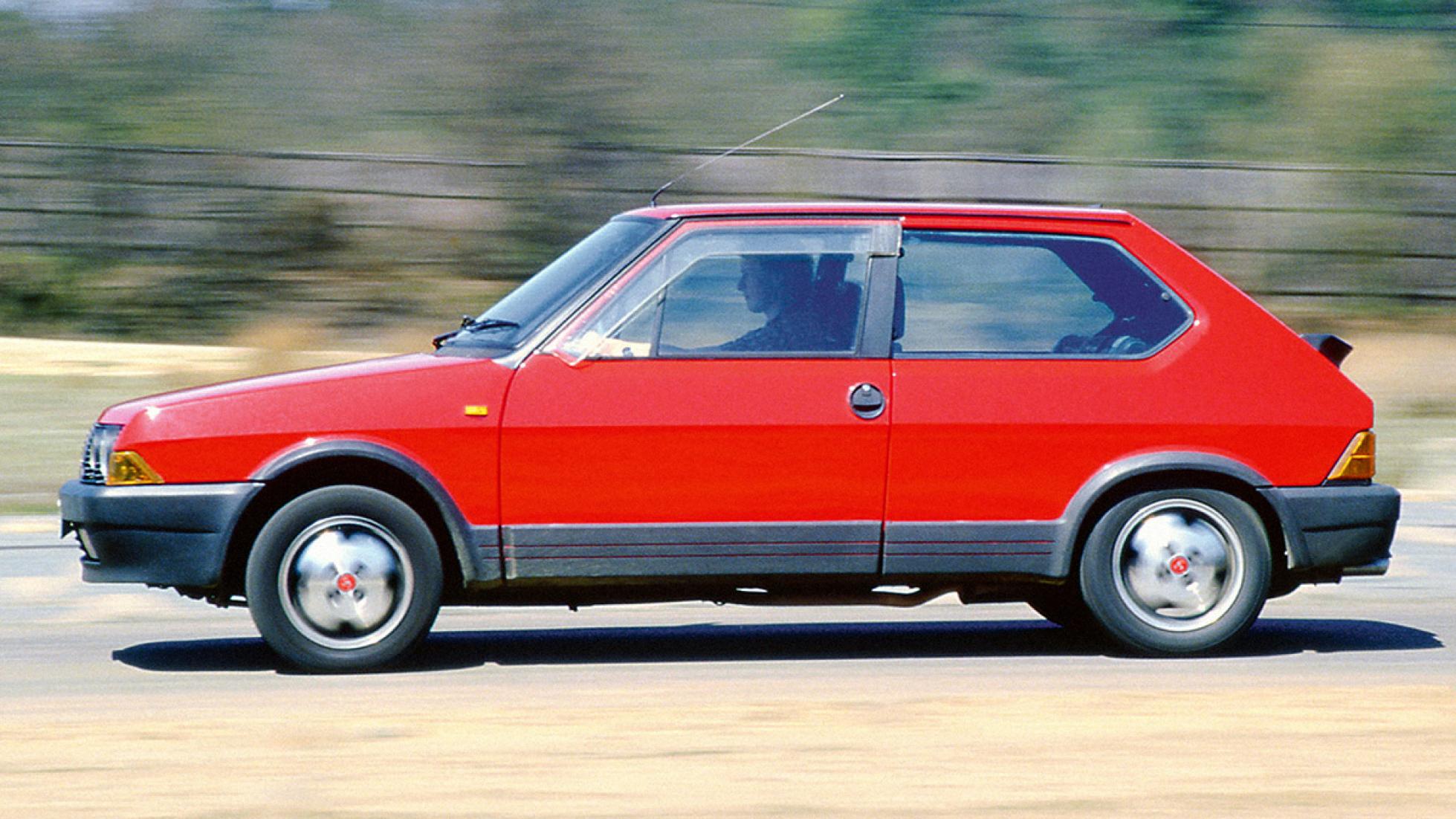
Fiat Ritmo (Strada) 130TC Abarth
This is the car that is most often compared to the Golf GTI… in one direction. If you know about the 130TC, you’ll compare it to a Golf GTI. If you know about the Golf GTI, you’ll… compare it to other Golf GTIs, probably, playing that generation game thing.
It’s kind of like a GTI, if you overlook a couple of things, like the fact that the 130TC is carburetted – it’s a high-performance version of a popular hatchback, with a powerful engine up front, gearbox up front, and drive up front. And if we’re being upfront with you, it was actually faster than the Golf GTI at the time. Oh, die Schande.
That’s down to the TC’s excellent twin-carb, 130hp 2.0-litre engine and well-matched ZF five-speed, and is probably one of the reasons Volkswagen returned with 16-valve heads and more power for the MkII GTI. Not that we’re drawing comparisons or anything.
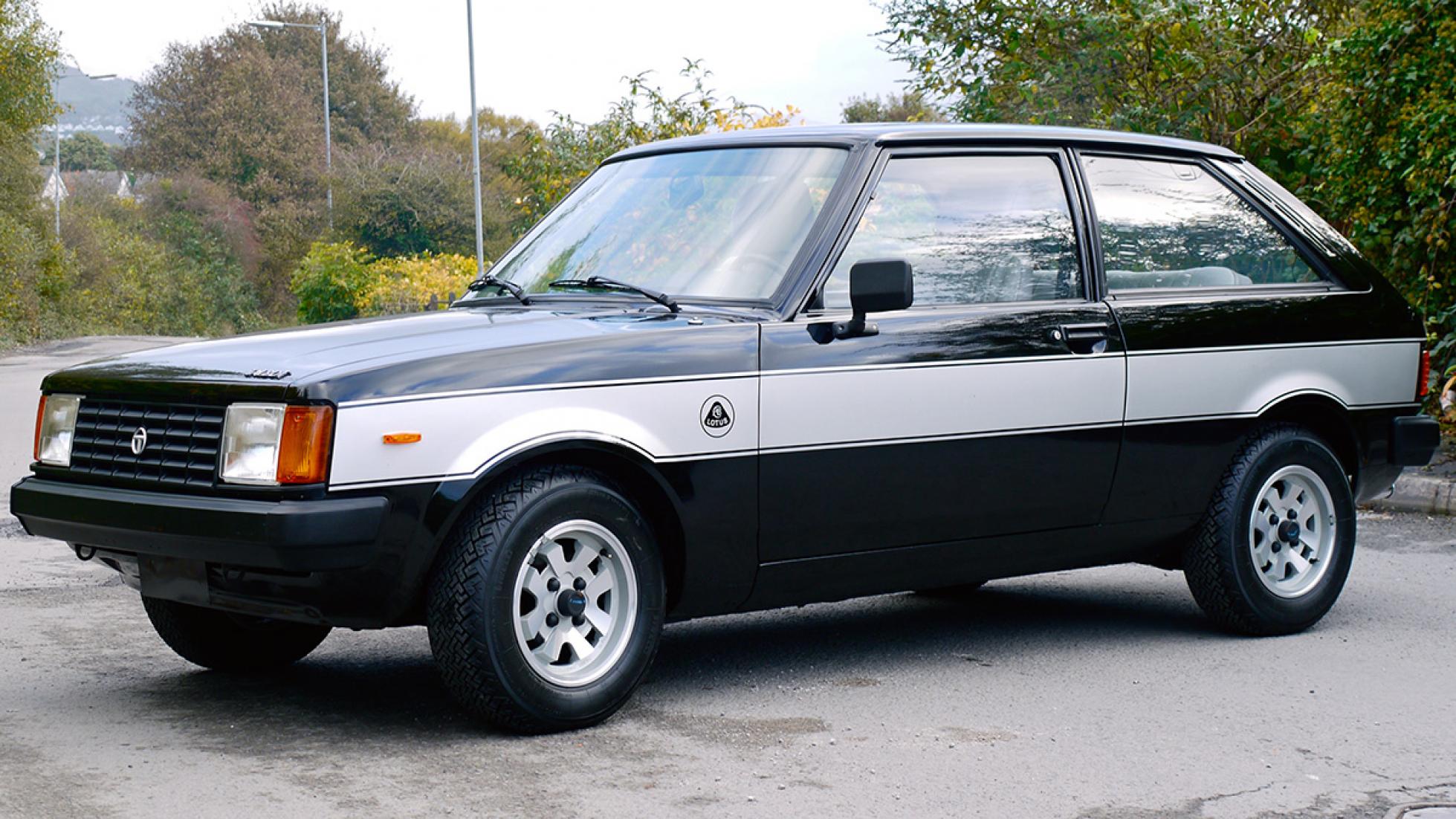
Talbot Sunbeam Lotus
Yeah, yeah, we know. This one’s flirting with obviousness a bit, with the whole ‘won the 1981 World Rally Manufacturer’s title’, but we can’t go past the story of this weird little rear-drive hatch.
The standard Sunbeam was thrown together in 19 months by lopping the end off a Hillman Avenger, shortening its wheelbase and throwing as many off-the-shelf parts at it as possible.
It was built up in the Linwood plant in western Scotland, which was a mere few hundred klicks from the nearest parts supplier and staffed by inexperienced locals, all so the Rootes Group could nab a £55m grant from the giant pot of money the UK government was using to bail out BL.
The headlights it was designed to use weren’t available, so the Sunbeam shipped with the headlights from… yep, the Hillman Avenger, which meant a quick bodge of recessed panels to make the lights look even close to right. It was not, as you might be gathering, an auspicious start.
And it continued on about as well, with the entry-level Sunbeam’s dismal 42hp producing a nought to 95 time usually reserved for buses. And now imagine taking this thrown-together-on-the-cheap hatch and transforming it into something that won Talbot a World Rally title against competition like the Audi Quattro, Renault 5 Turbo, and Fiat 131 Abarth. The mind boggles.
Really, credit has to go to Chrysler’s motorsport director, Des O’Dell, who took it upon himself to prove – even in the face of corporate rejection – that he could make a world-beater out of, well… a beater. And thanks to Lotus’s 2.2-litre four, ZF’s five-speed gearbox and 250hp in race trim – oh, and that WRC world title, naturally – we’d call it proved.
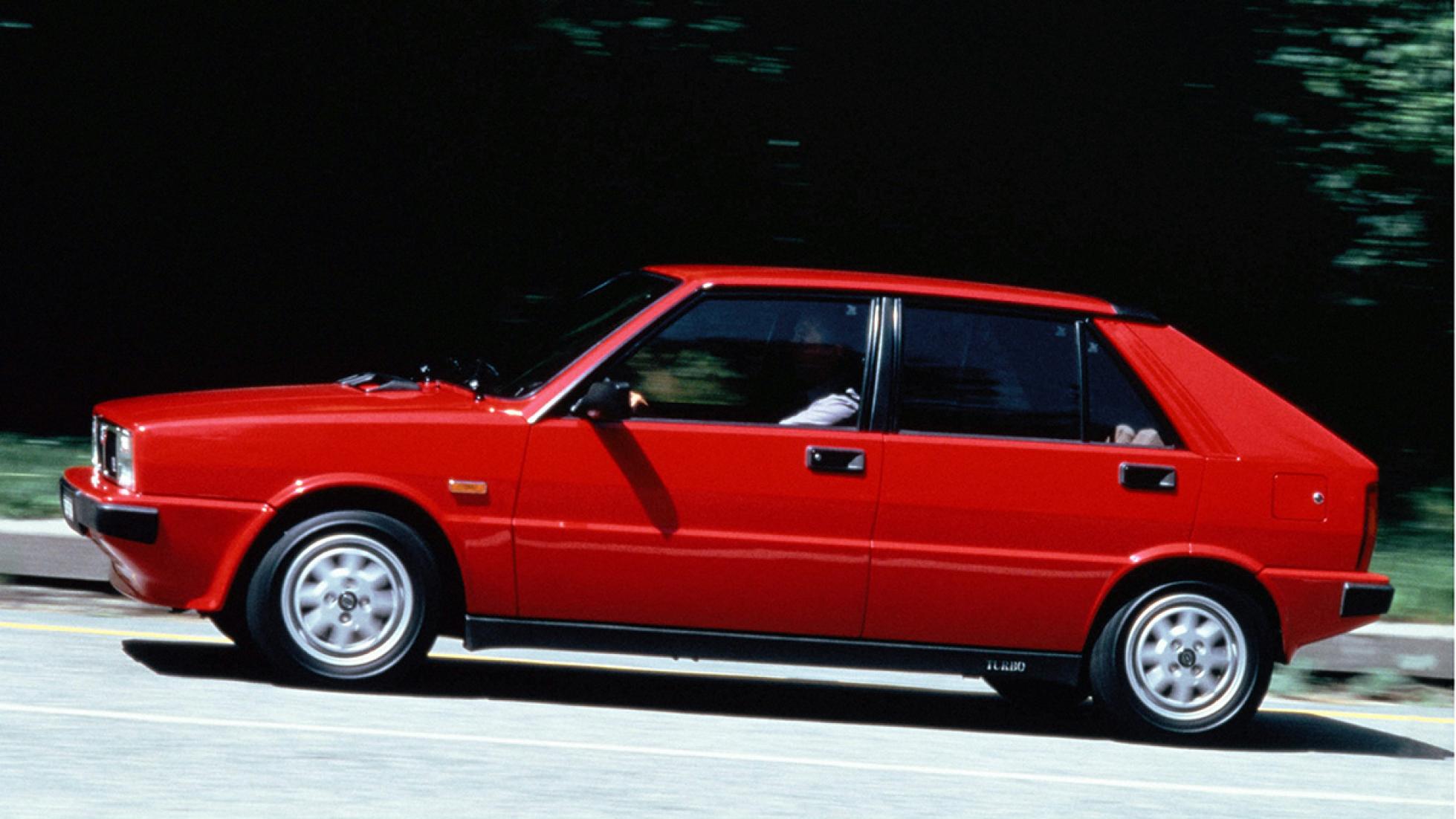
Lancia Delta HF
By now, you may have heard of the Lancia Delta Integrale. You know, it won some things and did some things and could be just about all we want from life. But languishing in its titanic shadow is the definitely-not-humble Delta HF. This was the first step from the Delta as a boxy and worthy city car into the supremely lustworthy hot hatch par excellence.
Unlike the outré Integrale (especially the Evo models), the HF was about as circumspect as hot hatches get. The bonnet bulges, flared wheel arches and ever-deeper chin spoilers would come later. As would four-wheel-drive, in fact. That’s right – in 1983, if you wanted it, Lancia would sell you a front-drive, turbo hot hatch. Man, Lancia really was the gift that kept on giving.
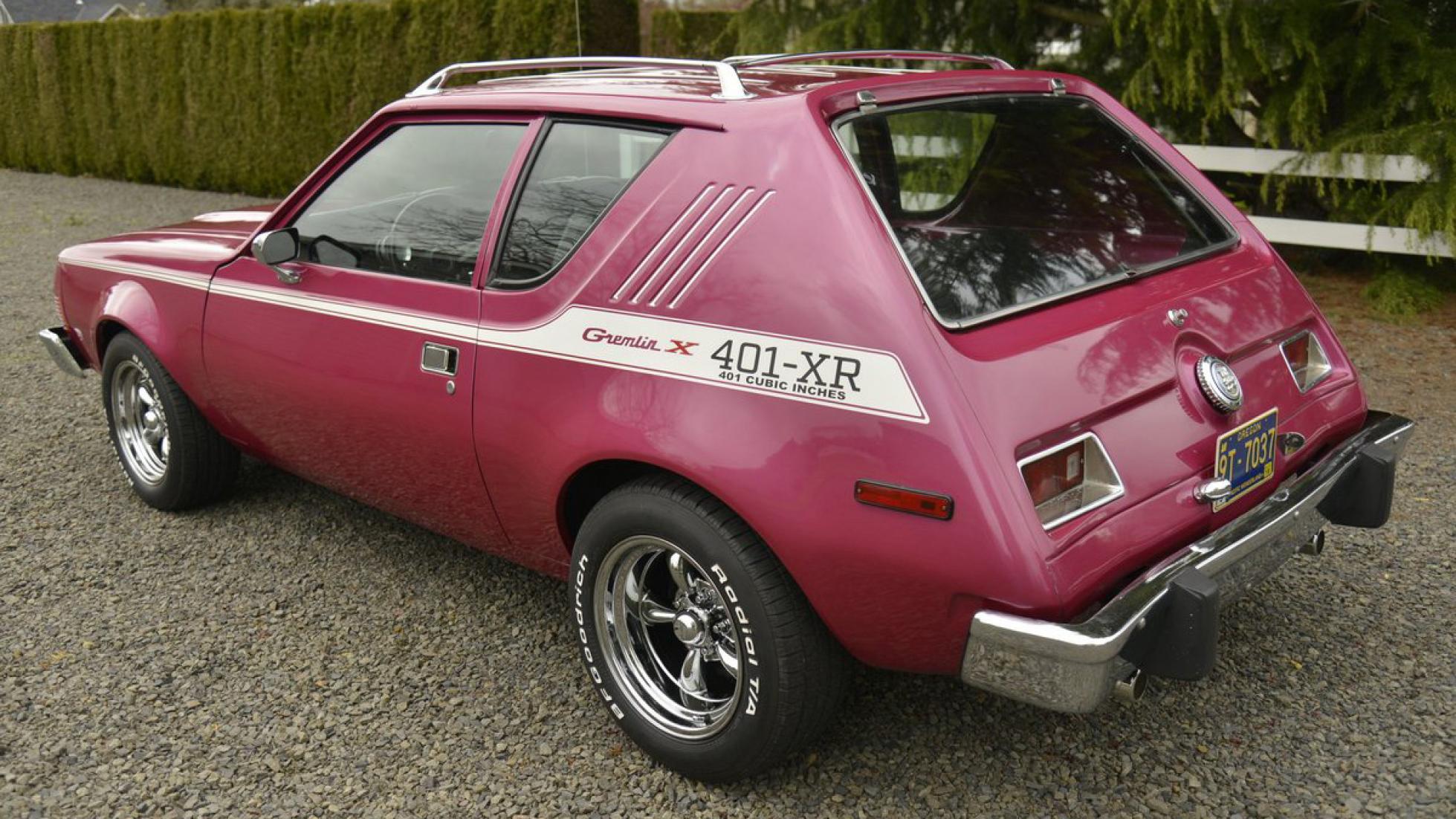
Randall 401-XR
Hatchbacks have never really been America’s metier. Coupes with engines the size of postcodes? Oh, easy. Gigantic road barges that struggle to hit double-digit miles per gallon? Oh yeah, got that one stitched up. But hatches? Not really.
Call it a problem of mindset. If you can agree that the only true and enduring luxury is space, then you see the problem already. A large house is more luxurious – and therefore more desirable – than a small apartment.
And, crucially, less embarrassing. And that applies to cars as well, especially for Americans, it seems. You hear them refer to ‘compact’ cars, and it somehow manages to sound disdainful and apologetic at the same time.
And now consider the AMC Gremlin. It, just like the Talbot Sunbeam, was a hacked-off saloon (in this case, the AMC Hornet), but seemed to take the idea to its extreme. The full-sized front could easily accommodate even a large American V8. And now you see where we’re going.
For the 401-XR, Randall American, a high-performance AMC dealer, took the top-spec, 5.0-litre V8 Gremlin, tossed its thoroughly disappointing 150hp V8 aside and installed a 6.6-litre V8 that made 255hp stock.
How much it actually made in the 401-XR is up for debate, as there was the option for hotter cams, performance headers and many other old-school go-faster bits. And you kind of would, if you’d gone to the effort of swapping out the engine for more performance, wouldn’t you?
A contemporary article on the 401-XR called it “about as squirrelly as anything we’ve ever driven”, before going on to report that they’d twisted the axle trying to do a burnout. So, enough poke, then.
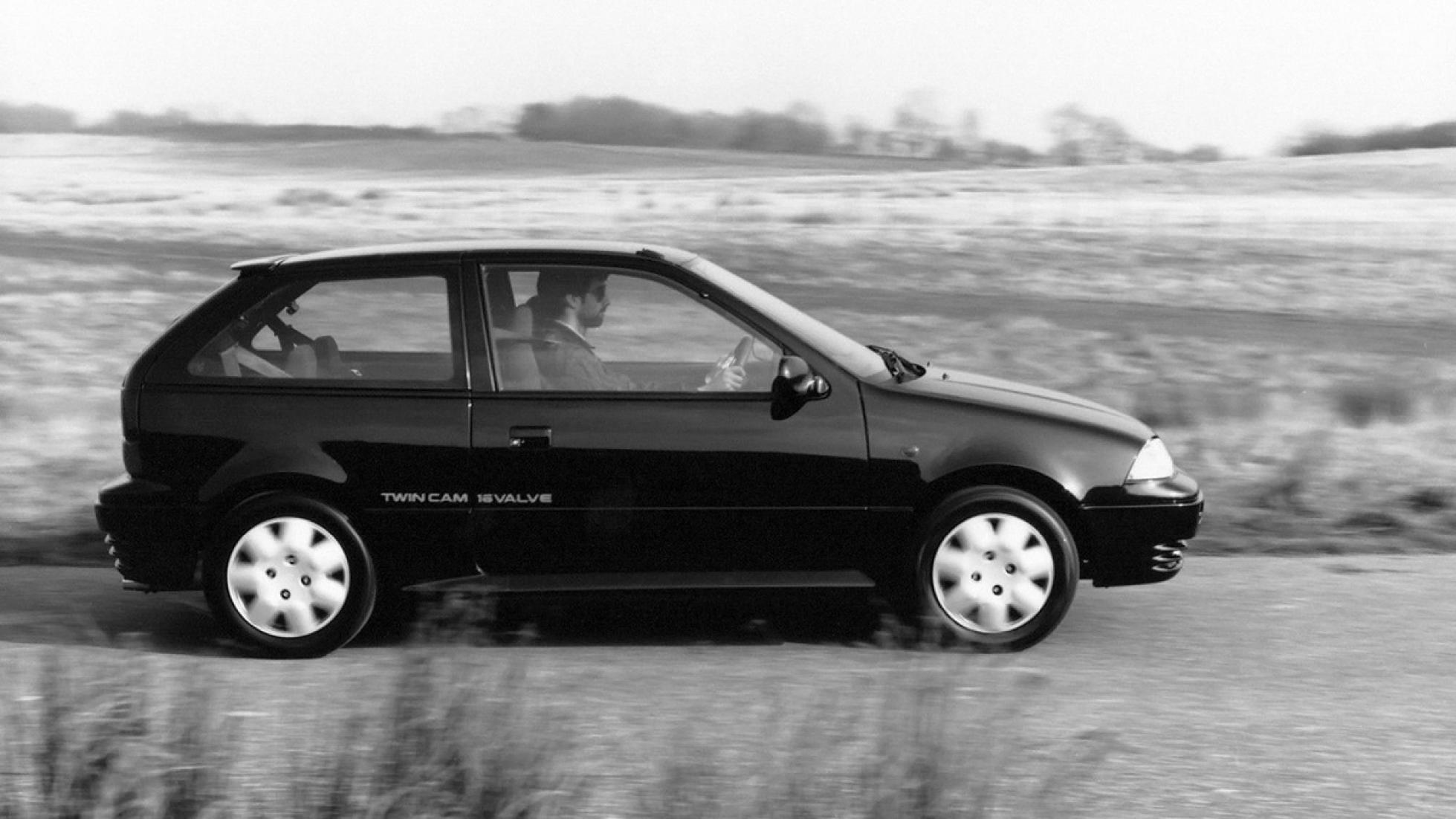
Suzuki Swift GTI
After 6.6 litres of V8, rear-drive, axle-twisting fury, the Swift GTI’s front-drive, 1.3-litre four cylinder is probably going to seem a bit on the anaemic side. But here we return to proper hot-hatch principles: lightness first, twin-cam, revvy engines second and cheapness third.
And with less than 900kg to shift, the 100hp on offer was more than enough to fling the GTI (don’t do it) along the road (don’t you dare do it)… Swiftly? (OK, that’s it. Your joke privileges are now revoked).
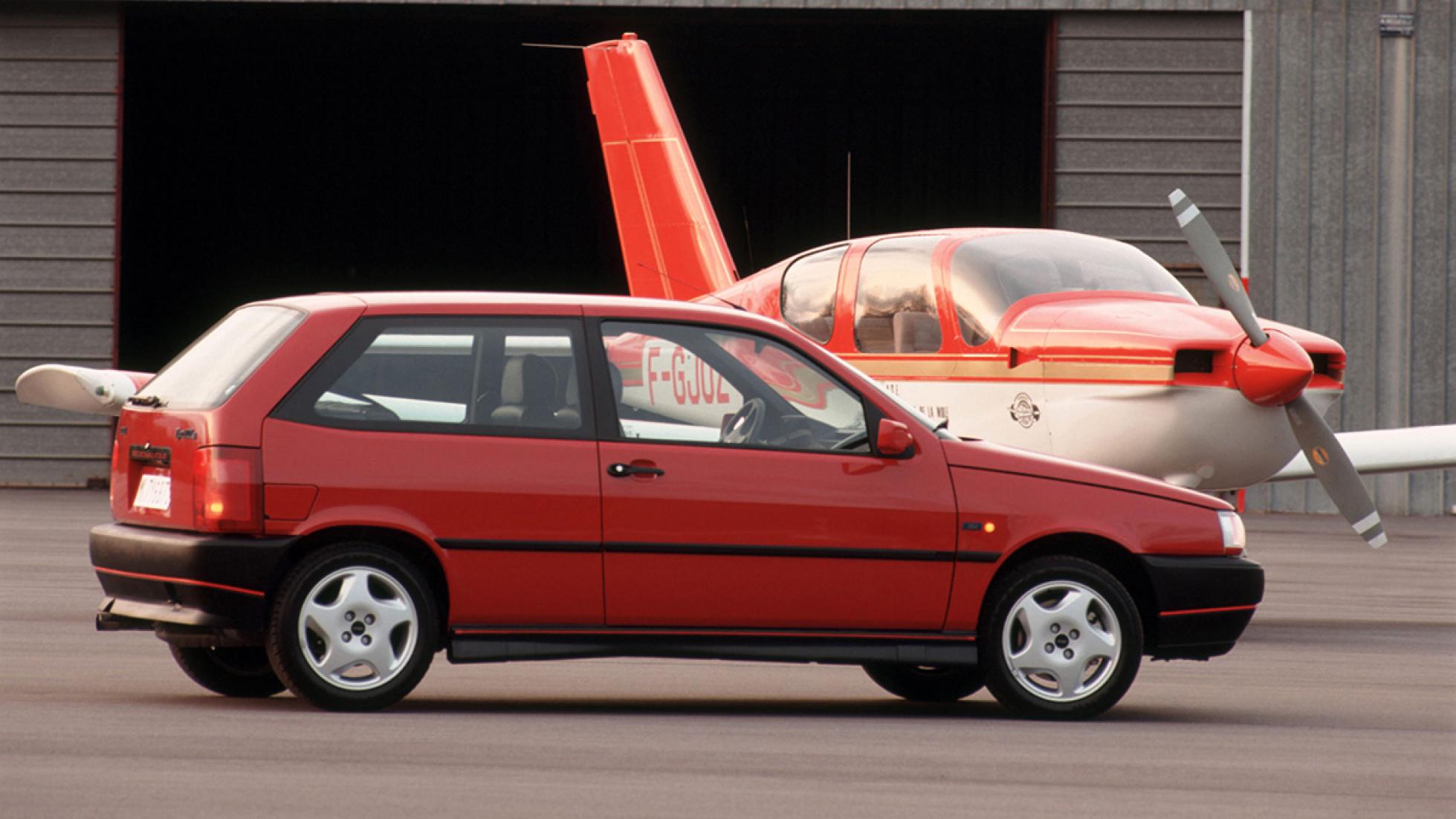
Fiat Tipo Sedicivalvole
Or, to translate to our colourless language, 16-valve. Also, if we want to translate the whole lot, it’d be ‘Formal decree type 16-valve’, which kid of sounds like a Fear Factory song that was never good enough to make an album.
But what about the car? Well, it came out when the Golf GTI was on to MkIII, so competition was not at its very strongest. In fact, one contemporary review said “the Tipo feels how the Golf should.” Ouch.
With about 150hp from its twin-cam 2.0-litre, an engine note that invoked the word ‘rorty’ from car journos more times than we found even close to comfortable, and better handling than the likes of the Escort RS2000 and Astra GSi, it won group tests and awards, and then promptly disappeared from our collective memory. Because sometimes life works like that.
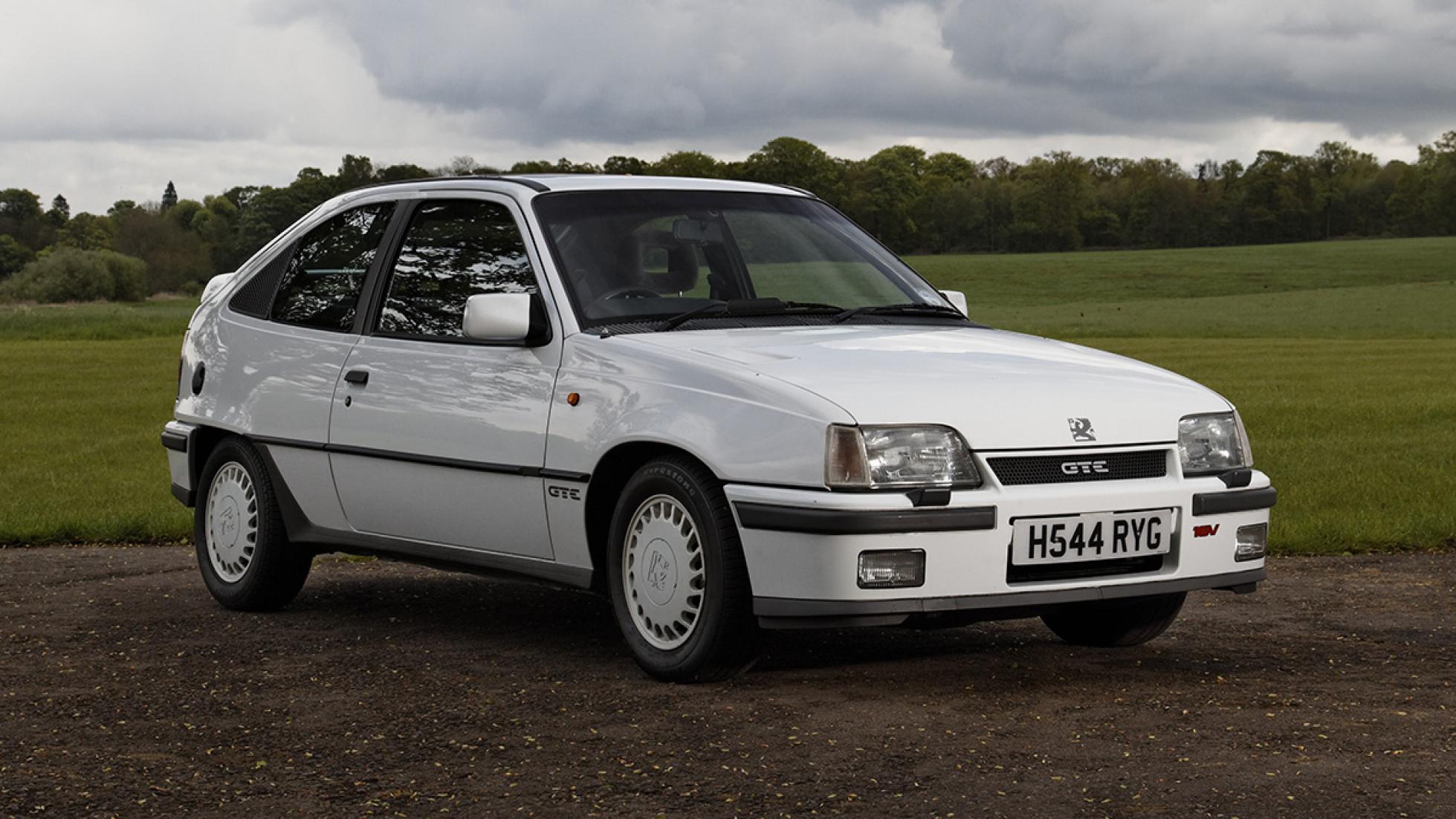
Vauxhall Astra GTE MkII 16V
Speaking of all-conquering, comparison-test-besting hot hatches that then disappeared like a fart in a hurricane… The Astra GTE, in its day, was among the most powerful in its field, quick in a straight line and right up there in the corners, too. And if really big parts of you baulked at the idea of a Vauxhall being class-leading in any sense, we’re right there with you.
But this thing really was. The GTE’s engine – a 2.0-litre, 16V four-cylinder – was sprinkled with Cosworth magic: forged pistons, hollow camshafts and a superb induction system that made its resultant 150hp one of the most conservative tunes this side of Neil Diamond.
Some enthusiasts have pushed the ‘Red Top’ out beyond 240hp, which is why you should always ask Cosworth to help you build your engine, like Vauxhall did.
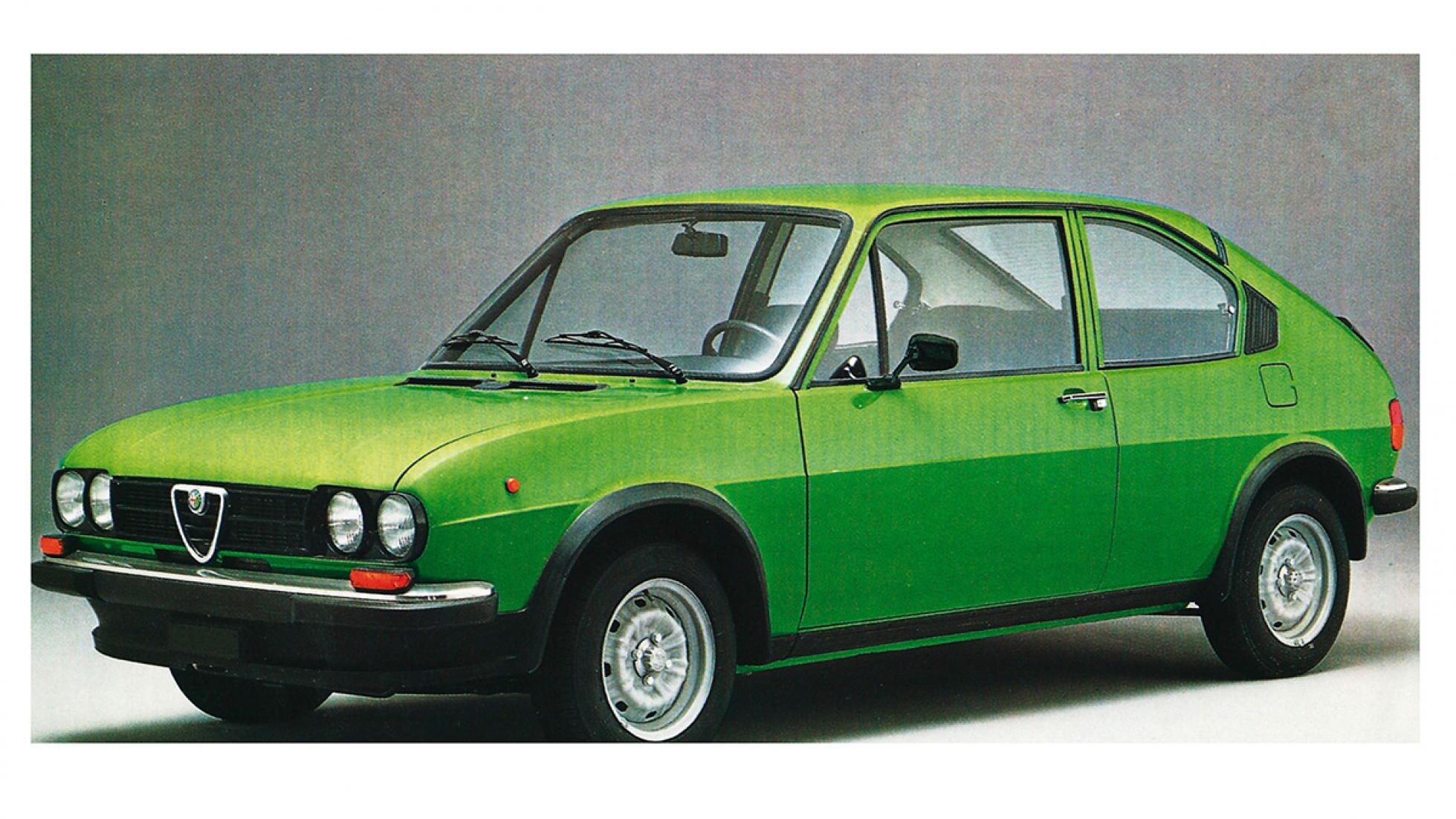
Alfa Romeo Alfasud Ti
If you’re of a certain age, then our choice of the Sud will be about as obvious as the rust that doomed these things. In case you haven’t heard the story: in exchange for government investment, the Alfasud (sud for ‘south’) was built in Naples, as opposed to Milan. And it was built… um, poorly. From cheap, low-quality Russian steel, which then rusted about as quickly as you would expect cheap, low-quality Russian steel to rust. And sometimes even faster.
But the basic idea behind the Sud was brilliant, especially for the time – a front-mounted boxer engine for low-slung weight and compactness, four-wheel disc brakes, inboard rear brakes for lower unsprung mass… for its time and its class, it was a technological marvel.
Luckily, the hatchback version, introduced right at the end of the Sud’s life, kept all the good bits and sorted much of the rubbish, rust-related woes. Also, it got twin carbs, which is how you say ‘better’ in yesteryear-speak.
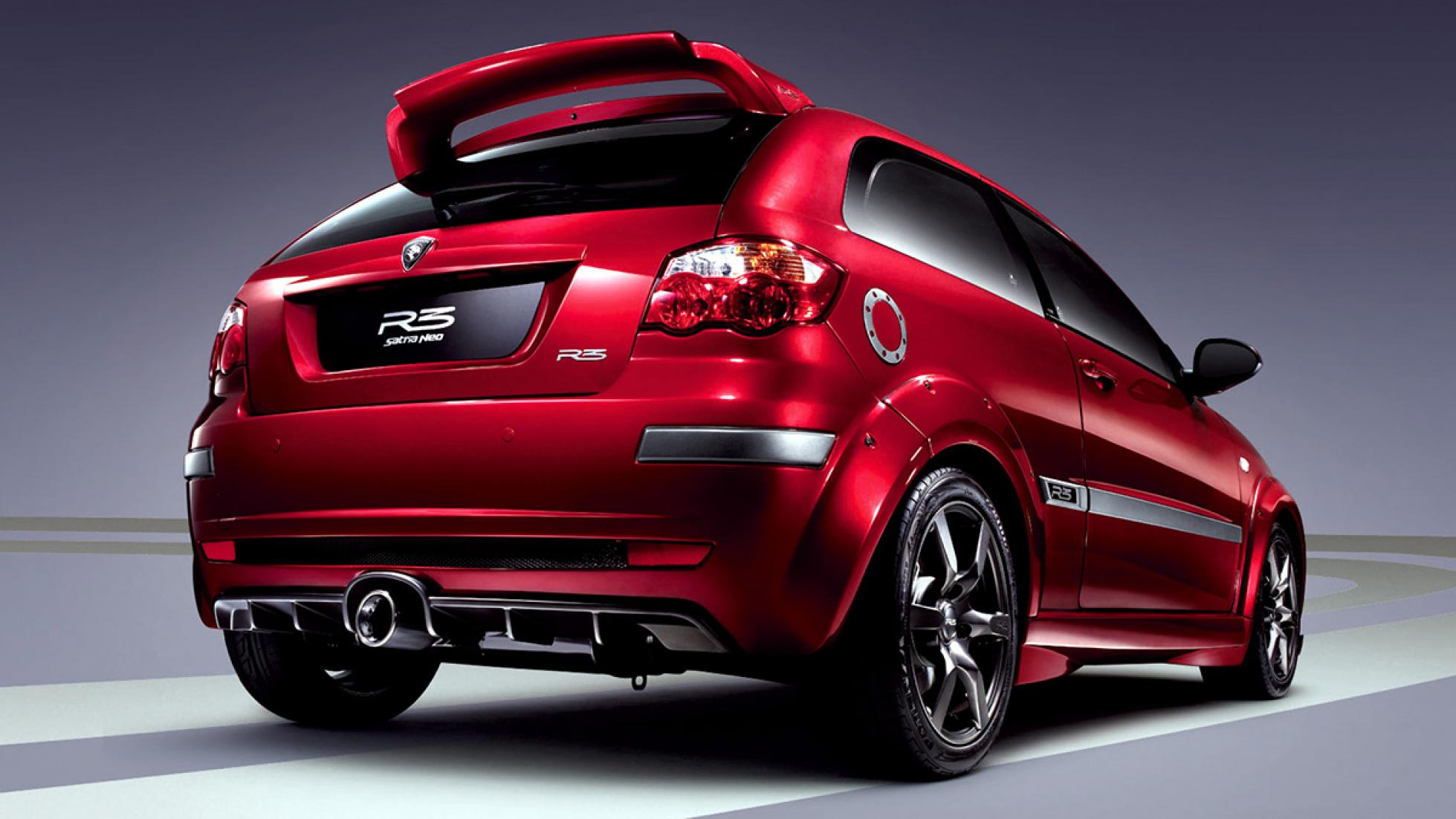
Proton Satria R3
When the Satria first came out, we weren’t what you’d call impressed. And now that it’s gone, our feelings are actually much the same. Every now and then, we drop a joke about its ‘Handling by Lotus’ badge, and just how much the team at Hethel had to do with the suspension.
While the Satria GTI claimed a 0-100 sprint of 8.5 seconds, which might be possible with the introduction of a particularly vertiginous cliff, the R3 was a proper go at hot hatchery.
Proton’s go-faster wing (R3) took the standard GTI, seam-welded the body, and then made merry with the go-faster bits: thick strut braces and sway bars, stiff, lowered suspension, slotted brakes with race pads, lightweight wheels, sticky tyres and a proper exhaust.
R3 also trimmed weight with lighter Recaro seats, a carbonfibre spoiler and gearknob and the unfeeling removal of anything they deemed unnecessary for going quickly, like soundproofing and airbags. The Momo steering wheel was really cool, which is probably a decent replacement for safety, right? Plus, less danger from Takata shrapnel.
Zero to speeding ticket was now entirely achievable in 8.5 seconds, thanks to a sub-tonne kerb weight and 140hp. And no cliffs in sight.
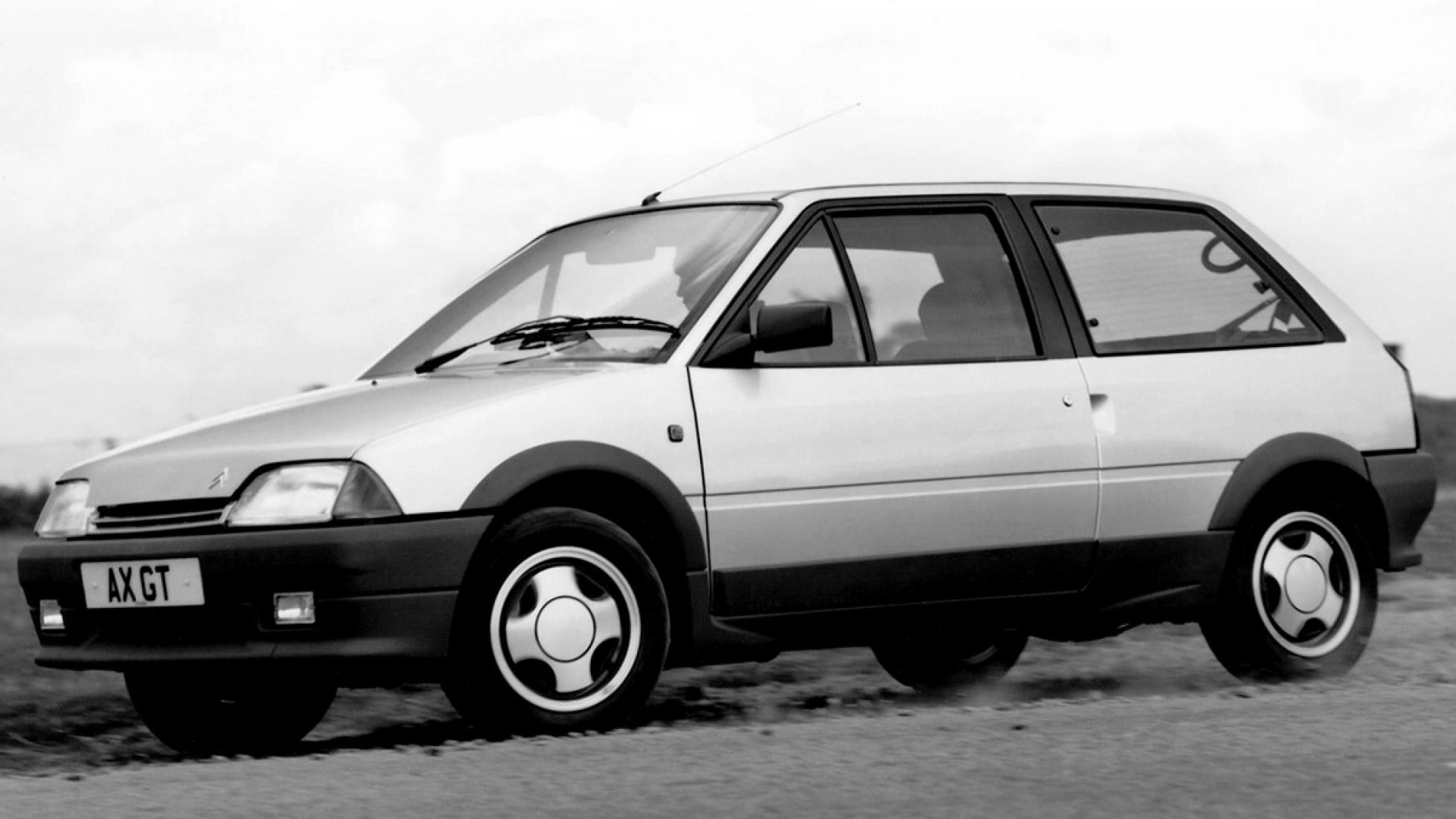
Citroen AX GT
Power is lovely and all, but it’s never a substitute for low weight. Case in point: an entry-level 500cc motorbike from a decade ago can reliably return 0-95 sprints in the fives. Think about how much horsepower, clever gearboxes and traction-aiding devices are needed to achieve that in a hatchback.
Now, we’re not saying that the AX GT could do 0-95 in anything approaching five seconds. Or that it had much in the way of power. What it did have in its corner, however, was an utter scarcity of weight: just 722kg.
Put two chunkier riders on a Honda Goldwing (that’s a motorcycle, in case you’re of the four wheels good, two wheels bad disposition) and you’re reaching the same sort of weight, if they’ve brought a bit of luggage in the panniers (that’s the boot, non-bike people).
And yes, 86hp is not what you’d call face-melting. But now imagine an entire mountain pass at full throttle, flinging a featherweight French hatch with just the very real prospect of painful crunchy death to temper your worst impulses.
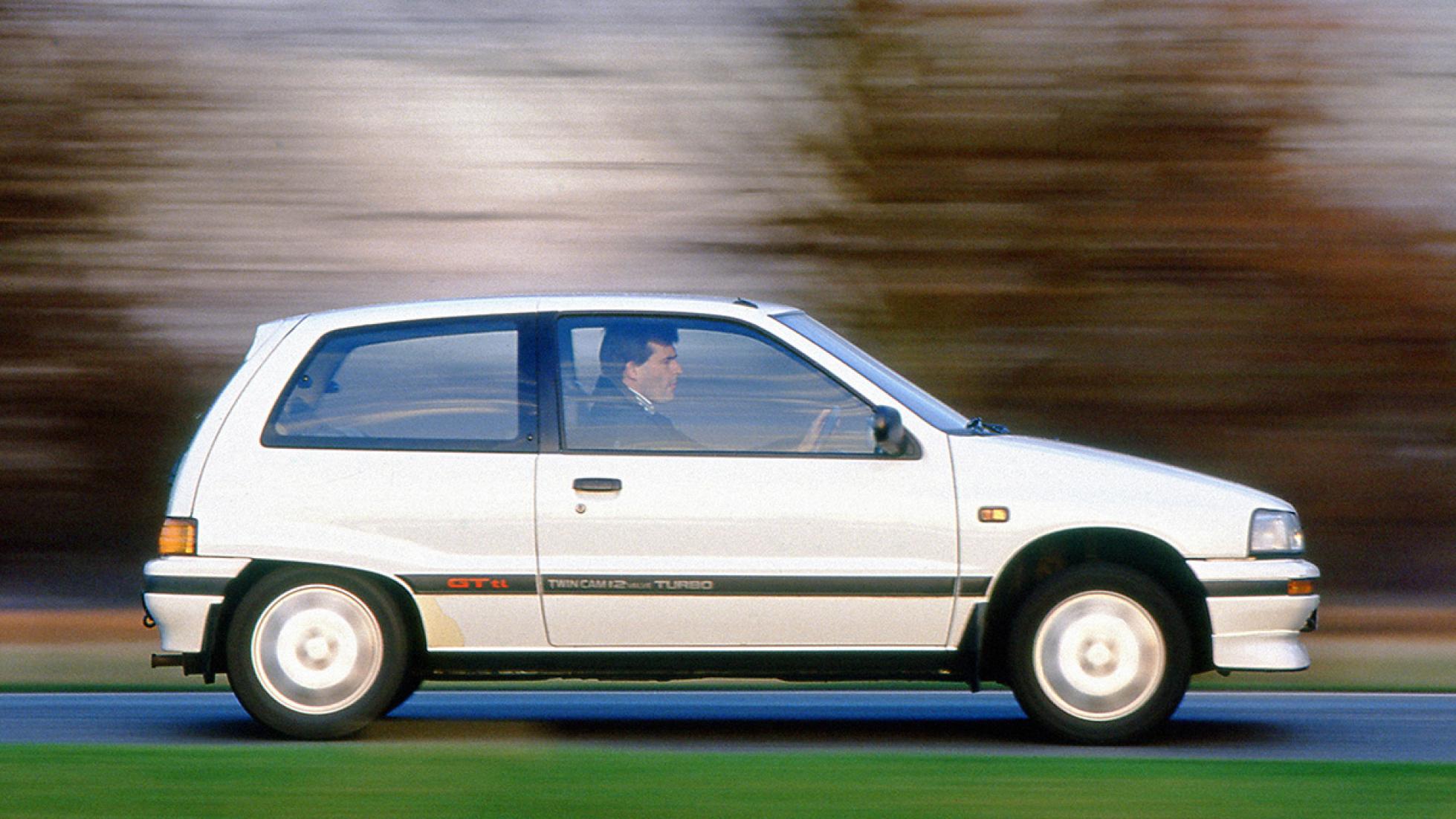
Daihatsu Charade GTti
Performance… Daihatsu. That’s one of those jokes, right? Like ‘vegan pork’ or ‘happy grunge song’? Wait a tick. Did you say 100hp from a 993cc triple? In 1987? What sort of madness is 100-odd horsepower per litre in 1987, from a roadgoing hatchback?
Whatever particular kind of madness it is, it’s the kind of madness that can accelerate to 95km/h in eight seconds, weighs less than 900 kilos and has a turbocharger, from back when they were used for exciting purposes, not as a replacement for displacement.
Also, it’s a turbo engine that revs beyond 7,500rpm. How did Daihatsu do a better job of this back in 1987 than manufacturers do today?
Daihatsu also sprung (sorry) for MacPherson struts front and rear, rather than the cheaper torsion beam rear end. Pity the 205 GTI used torsion beam and was still more fun to drive. Oh well, the joke was good while it lasted.
STORY Craig Jamieson
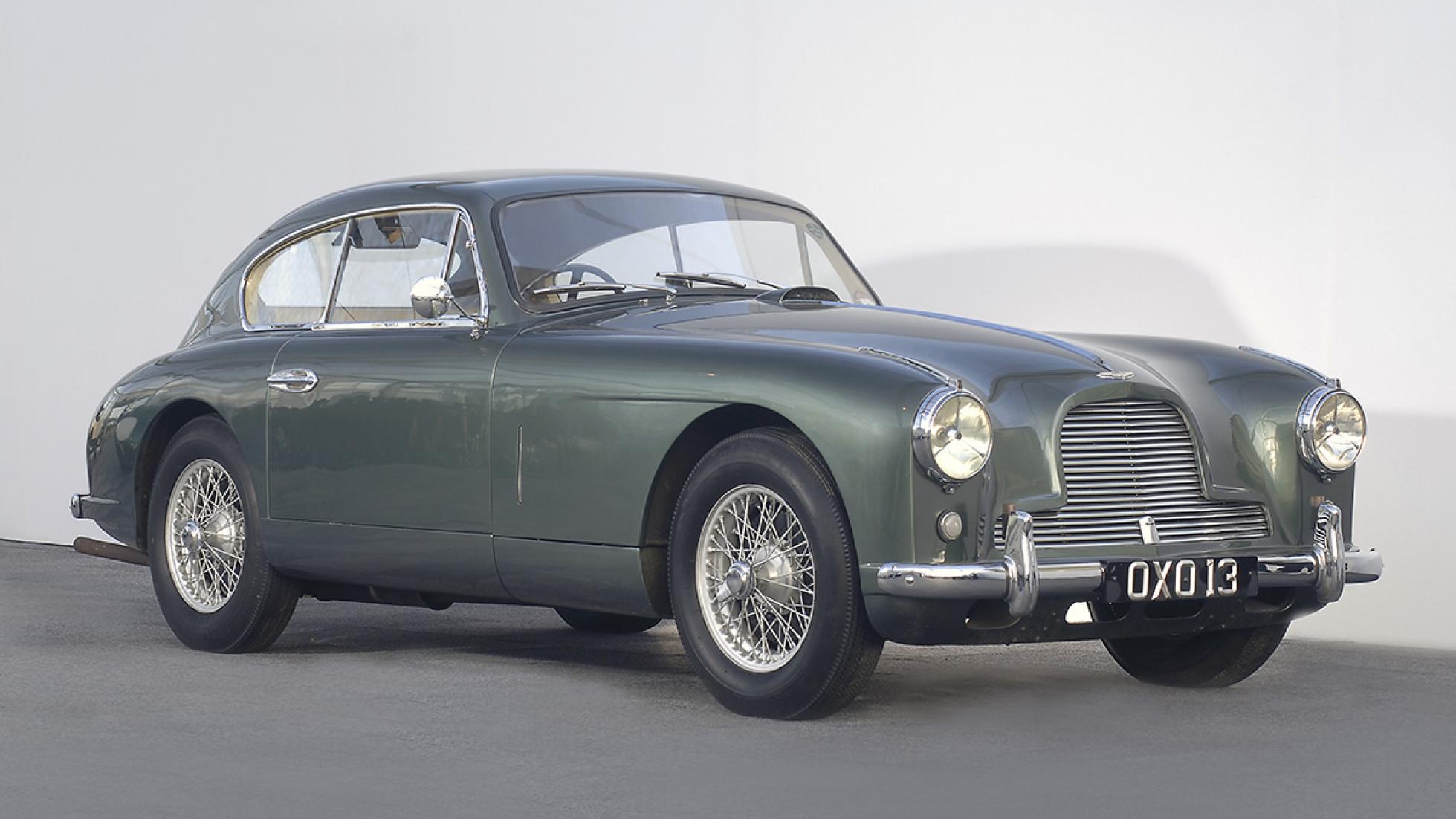
Aston Martin DB2/4
Oh yes. None of that hoi-polloi hot hatch stuff should stick its grubby little nose around here; it’s time to breathe some rarefied air. The DB2/4 is a hatchback (unless buyers plumped for the fixed-head coupe) and there’s no shadow of a doubt that it earns its hot appellation as well. It may fail the central tenet of hot hatchery which is supercar performance for the masses, but talk like that won’t be accepted in this country club, and certainly not by a non-member.
So, just how hot to trot is this little British hatchback? Well, the body is aluminium, there’s independent front suspension and very dependent rear suspension. It is also rear-drive, with a 2.6-litre, dual-overhead-cam straight six.
These are happy words to find in the same sentence. OK, so it has drum brakes and a live rear axle, and somewhere between 125 and 140hp, so it’s not going to keep pace with something like a Focus RS. But in terms of the coolest hot hatch ever? One is inclined to hand it to the Aston.






